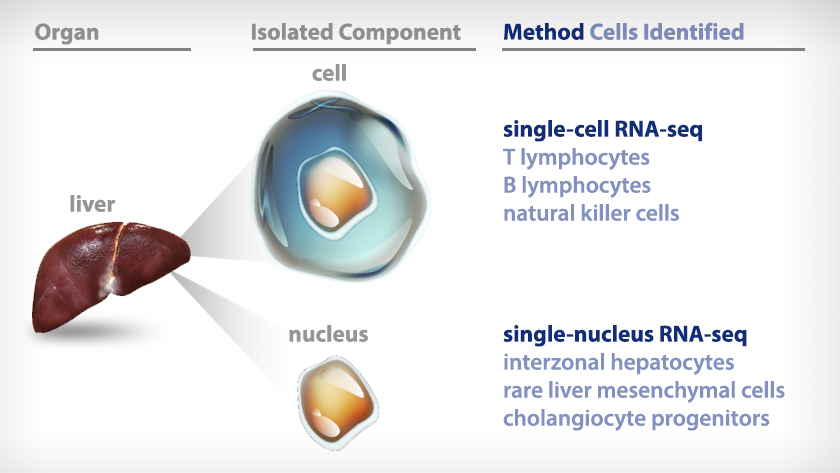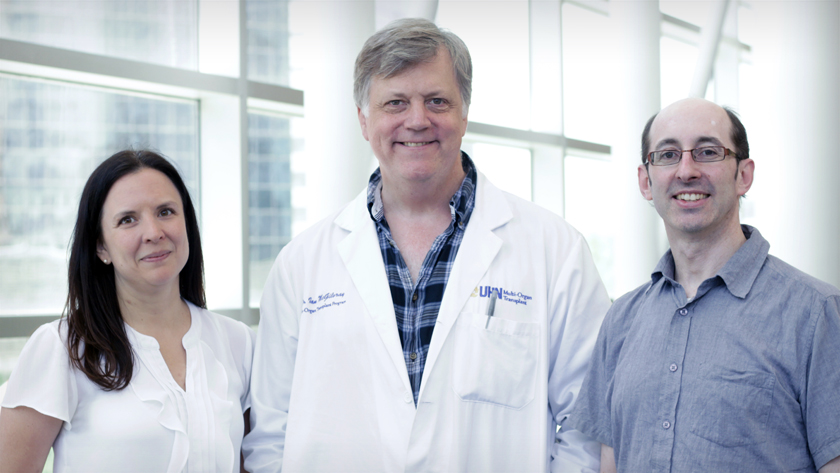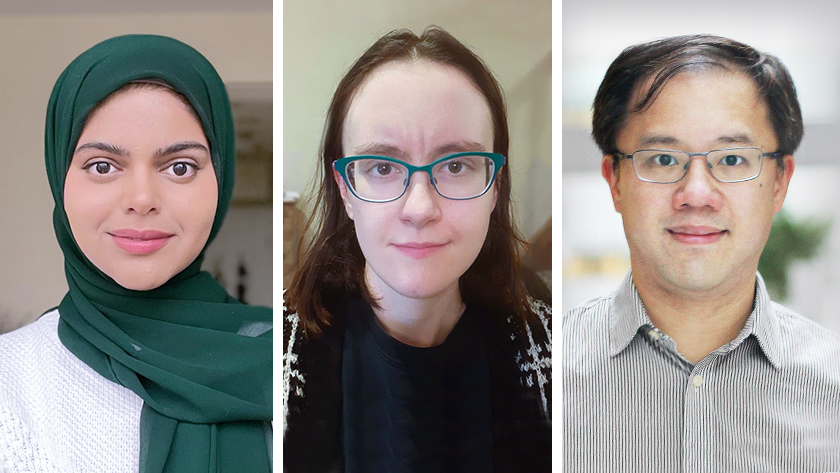
Researchers at UHN have refined a detailed map of cells present in the liver by combining two advanced single-cell genetic approaches.
“Current approaches rely on the sequencing of genetic material, such as RNA, from single cells. The drawback of this approach is that the harsh detergents that are required to break up tissue can also damage fragile cells, leading to sample loss,” says the Ajmera Transplant Centre’s Dr. Sonya MacParland, who is the co-senior author of the study, Scientist at the Toronto General Hospital Research Institute (TGHRI), and Assistant Professor in the departments of Immunology and Laboratory Medicine & Pathobiology at the University of Toronto (UofT).
To improve the team’s ability to detect the different types of cells found in the human liver, the team combined a single-cell RNA sequencing (RNA-seq) approach with single-nucleus RNA-seq. Single-nucleus RNA-seq does not require researchers to isolate intact cells from liver tissue. Instead, researchers isolate and analyze nuclei, the subcompartments in cells that house genetic material.
The team analysed genetic material from 73,295 individual cells from four samples of healthy human liver tissue. By adding single-nucleus RNA-seq to their analyses, the team was able to add the following new cell types to their map of the liver:
- Interzonal hepatocytes: These cells are involved in maintaining liver function and regeneration.
- Rare subtypes of liver mesenchymal cells: These include cells that have been implicated in fibrosis, or scarring of the liver, such as hepatic stellate cells, fibroblasts and vascular smooth muscle cells.
- Cholangiocyte cells (mature and precursor cells): These cells line the bile ducts and generate a third of the total bile volume; they are also implicated in rare and poorly understood autoimmune liver diseases.
“An added benefit of using single-nucleus RNA-seq is that we can isolate nuclei from frozen tissues. This approach opens the door for researchers to study the large collections of samples that are present in tissue biobanks,” says Dr. Gary Bader, co-senior author of the study, Affiliate Scientist at the Princess Margaret Cancer Centre and Professor at UofT’s Donnelly Centre for Cellular and Biomolecular Research.
It is important to note that single-nucleus RNA-seq cannot replace single-cell RNA-seq. Just like when researchers isolate entire cells, isolating cell nuclei can also lead to sample loss—this is because some nuclei, especially those found in cells of the immune system, are more structurally complex and delicate than others.
“By combining these two approaches, we were able to gain the benefits of both,” says co-senior author Dr. Ian McGilvray, who is Head of Liver and Pancreas Surgery at UHN’s Sprott Department of Surgery, a surgeon and scientist at UHN’s Ajmera Transplant Centre, TGHRI Senior Scientist and Professor at UofT's Department of Surgery. “Fully characterizing the composition of the liver is crucial to understanding healthy liver function as well as disease—and this new combined approach brings us closer to achieving this.”
The team also released an online app, created by Dr. Tallulah Andrews, to enable sharing and browsing of the human liver spatial transcriptomics data included in the study. To use the app and view the data, click here. https://macparlandlab.shinyapps.io/healthylivermapspatialgui/ .
Andrews TS*, Atif J*, Liu JC*, Perciani CT, Ma XZ, Thoeni C, Slyper M, Eraslan G, Segerstolpe A, Manuel J, Chung S, Winter E, Cirlan I, Khuu N, Fischer S, Rozenblatt-Rosen O, Regev A, McGilvray ID, Bader GD, MacParland SA. Single-Cell, Single-Nucleus, and Spatial RNA Sequencing of the Human Liver Identifies Cholangiocyte and Mesenchymal Heterogeneity. Hepatol Commun. 2021 Nov 18. doi: 10.1002/hep4.1854. Epub ahead of print. PMID: 34792289.*co-first authors
This work was supported by the Chan Zuckerberg Initiative DAF; the UofT’s Medicine by Design initiative, which receives funding from the Canada First Research Excellence Fund; the U.S. National Institutes of Health; the Natural Sciences and Engineering Research Council of Canada; the Ontario Government; the Canadian Network on Hepatitis C, which is funded by a joint initiative of the Canadian Institutes of Health Research and the Public Health Agency of Canada; PSC Partners Seeking a Cure Canada; and the UHN Foundation. Dr. Slyper consults for Genentech. Dr. Regev owns stock and holds intellectual property rights with Celsius and Immunitas. Dr. Regev owns stock in Roche and Neogene.

The co-senior authors of the study were (L-R) Drs. Sonya MacParland, Ian McGilvray and Gary Bader.

Staff and trainees that made key contributions to the study include (R-L) co-first authors of the study Research Associate Dr. Jeff Liu, Dr. Tallulah Andrews (senior postdoctoral fellow) and Jawairia Atif (PhD candidate).




